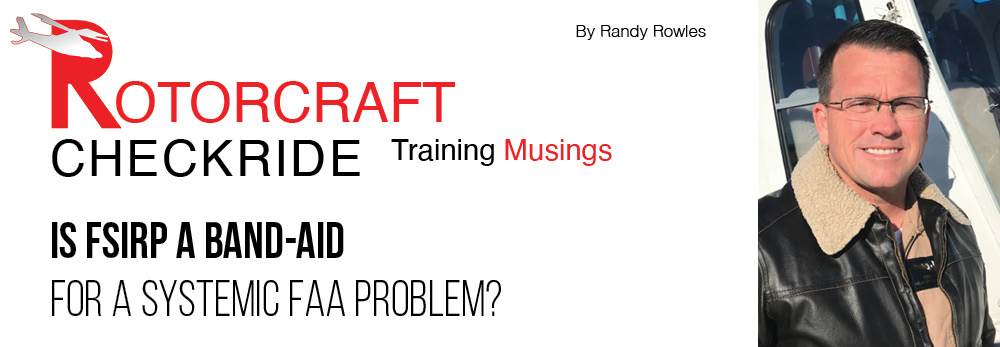|
Jun
27
2021
|
|
Posted 4 years 171 days ago ago by Admin
|
|

Recently, the FAA has tried to increase the number of helicopter-specific Inspectors within their ranks. This effort was driven in part to improve the oversight of helicopter operators. Many FAA inspectors are not rated in helicopters, so engaging with a helicopter-specific operator on issues requiring a keen knowledge and understanding of helicopter operations may be limited. To support these situations, the FAA developed the Flight Standards Inspector Resource Program (FSIRP).
The FSIRP operates for the benefit of any facility or inspector with a need for a resource inspector to conduct a pilot evaluation, testing, or checking (certification) activity when designees or check pilots are not able to perform the function. So, if an FAA Inspector needs to provide an oversight function they are not qualified to fulfill, a request for a FSIRP can be made internally and the oversight requirement met.
Although the program has merit, the FAA remains understaffed, and this has a direct effect on the effectiveness of the FSIRP. Each FSIRP inspector has a very real job with their own set of operators in addition to any FSIRP duties they may volunteer to fulfill. Essentially, the FSIRP takes already over-tasked Inspectors from one FSDO and allows them to support other FSDO that may have minimal to no specialty aircraft oversight support at all.
On the surface, the FSIRP solution makes logical sense by utilizing the available capacity of an inspector, sharing that resource with industry. However, the devil is in the details! Not all FSDO leadership support the FSIRP process and rightly so. By taking an inspector out of their daily job requirement, the FSDO manager may be unable to properly support their own operators in the FSDO area. This situation continues to create friction within the FAA.
Within the helicopter community, FSIRP requests are often utilized for SFAR-73 aircraft (Robinson R22/44) and night vision goggles (NVG). Even within the helicopter-specific inspector ranks, many are not qualified in either. The FAA is trying to improve the numbers of SFAR 73 and NVG-qualified helicopter Inspectors, but the manner in which the training and currency is managed is cumbersome at best. The scheduling and approval of FAA inspector annual flight training, NVG training, and/or currency flights are all managed through different offices, many with completely different procedures.
In all cases, it is the operator that falls victim to the dysfunction of this program. Whether it is the operator or the FAA losing the resource, it's painful.
As an operator, I too fall victim to the effects of this dysfunctional process. I have been waiting more than a year to complete a simple addition of an aircraft to an existing 135 certificate. My situation is not unique. I believed early in the hiring initiative of helicopter-specific FAA inspectors that the FAA had help on the way. Today, my confidence meter has fallen to an all-time low.
FAA FSIRP inspectors are the heroes in all of this. They often take it upon themselves to put forth extra effort to get a solution for an operator figured out. So, to all of them—Thank You!
About Randy:
Randy Rowles has been a FAA pilot examiner for 20 years for all helicopter certificates and ratings. He holds a FAA Gold Seal Flight Instructor Certificate, NAFI Master Flight Instructor designation, and was the 2013 recipient of the HAI Flight Instructor of the Year Award. Rowles is the owner/president of Helicopter Institute.
Visit Helicopter Institute's website for more information
Website: www.helicopterinstitute.com
YouTube Channel: https://www.youtube.com/channel/UCt4y...